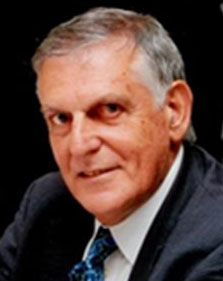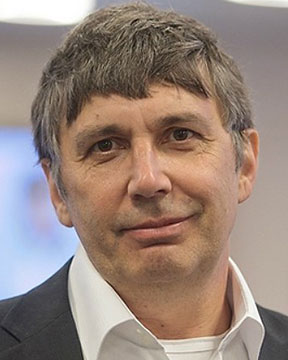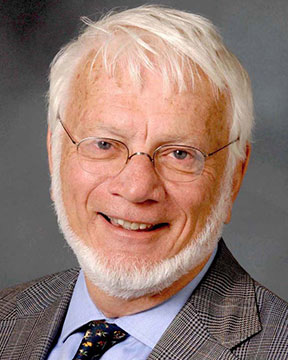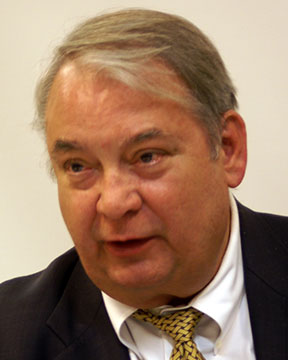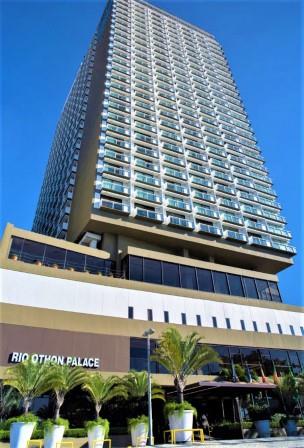ORALS
SESSION: SISAMTuePM1-R5
Amorphous Materials | Zehetbauer International Symposium on Science of Intelligent and Sustainable Advanced Materials (4th Intl. Symp. on Science of Intelligent and Sustainable Advanced Materials (SISAM)) |
| Tue Nov, 6 2018 / Room: Copacabana A (150/1st) | |
| Session Chairs: A. Lindsay Greer; Session Monitor: TBA |
14:50: [SISAMTuePM107] Invited
Rare Earth-containing Multi-component Metallic Glasses Jean-marie
Dubois1 ; Luka
Kelhar
1 ; Saso
Sturm
1 ;
Spomenka
Kobe1 ;
1Josef Stefan Institute, Ljubljana, Slovenia;
Paper Id: 143
[Abstract] Metallic glasses belong to the class of advanced materials, which exhibit mechanical properties, corrosion resistance, and magnetic properties far superior to that of crystalline materials of similar compositions. Rare earth (RE) containing metallic glasses, which hold some extraordinary properties (such as a very low glass transition temperature), however, have not been extensively studied in the past. Due to the complex electronic and magnetic structure induced by the RE elements, their alloys are expected to possess some excellent fundamental properties. The subject of this paper addresses Ce- and Gd-based metallic glasses, which differ upon their magnetic moments and electronic configurations. At room temperature (RT), cerium reveals paramagnetic behavior with a low magnetic moment of 0.6 μB, while gadolinium, on the other hand, shows the transition into the ferromagnetic state just below RT and possesses one of the highest magnetic moments among REs, with 7.5 μB. Electronic structure of cerium has an unusual 4f electron configuration, which fluctuates up to 4 outer electrons depending on its neibourhood, thus giving Ce and its alloys some unexpected physical properties, such as significant volume change or the emergence of a Kondo state. The fundamental differences between Ce and Gd based metallic alloys originate in different electronic and magnetic structure and the goals of the proposed doctoral dissertation are focused to the experimental analysis of structure, thermal analysis, microstructure and magnetic properties of the multicomponent alloys.
Coupling of the fundamental physical and magnetic properties of Ce and Gd, with elements of Al, Fe, and Cu (which by the way are respectively immiscible in each other) is to date unknown. The subject of the proposed talk is to provide fundamental answers and to show a connection between the composition and structure of the alloy and corresponding properties. The purpose here is to investigate the influence of Ce and Gd rare earth (RE) with greatly differing magnetic moments, on the structure, thermal properties, microstructure and magnetic properties of multicomponent Al-RE-Fe-Cu alloys.
Formation and stability of glasses can be traced via differential thermal analysis (DTA) and calorimetry (DSC), which also enable the characterization of transformation kinetics. Via pulsed electric current sintering (PECS), powdered samples can be formed into bulk metallic glasses through the process of thermoplastic consolidation in the vicinity of the glass transition temperature (Tg). Magnetic properties of the glasses are analyzed as a function of temperature and time, via controlled crystallization at a temperature 5°C higher than the crystallization temperature (Tx) and time-varying from several minutes to hours. Detailed structural and microstructural characterization is performed via X-ray diffraction (XRD) and electron microscopy, which encompasses scanning electron microscopy (SEM) and transmission electron microscopy (TEM).
The field of RE-based metallic glasses has not yet been thoroughly investigated concerning the influence of low and high magnetization RE elements on the structure and magnetic properties. It is of fundamental significance to connect the observed magnetic behavior of glasses with their structural features. In this view, particularly interesting is the coupling between the crystalline lattice and magnetic properties since the behavior of short-range ordered amorphous materials is different from long-range ordered crystalline matter. Another parameter that plays a role is the interlinking effect of the Gibbs free energy and transformation kinetics, in the metastable region of the highly viscous glass when Tg<T<Tx.
The hypothesis is based on the fact that the electronic structure and magnetic moments of Ce and Gd are significantly different. It is expected that consequently the difference will also be reflected in the magnetic behaviour of the corresponding alloys. Due to the metastable nature of the glassy materials, heating above Tx will trigger crystallization. However, since some of these alloys possess a well marked Tg that is lower than Tx, we are offered with a temperature gap, which facilitates the study of the transition from viscous glassy state (at Tg) to the crystalline state commencing at Tx. Experimental parameters are varied through the selection of different annealing temperatures and annealing times. Differences in structure, microstructure, and magnetic properties are anticipated with different amounts of crystallites; however, detailed experimental work is essential to provide acute answers.
References:
[1] Klement W, Willens RH, Duwez P, Non-crystalline Structure in Solidified Gold-Silicon Alloys. Nature. 1960;187(4740):869-870. doi:10.1038/187869b0.
[2] Inoue A, Stabilization of metallic supercooled liquid and bulk amorphous alloys. Acta Mater. 2000;48(1):279-306, doi:10.1016/S1359-6454(99)00300-6.
[3] Dubois J-M, Topological instability of metallic lattices and glass formation. J Less-Common Met. 1988; 145:309-326. doi:10.1016/0022-5088(88)90289-5.
[4] Greer AL, Confusion by design. Nature. 1993;366(6453):303-304. doi:10.1038/366303a0.
[5] Ferry M, Direct strip casting of metals and alloys. 1st edition. (Ferry M, ed.). Cambridge: Woodhead Publishing; 2006.
[6] Z. Bian and A. Inoue, Ultra-low glass transition temperatures in Ce-based bulk metallic glasses, Mater. Trans. 46 (2005), pp. 1857-1860
SESSION: SISAMWedPM2-R5
Functional Materials | Zehetbauer International Symposium on Science of Intelligent and Sustainable Advanced Materials (4th Intl. Symp. on Science of Intelligent and Sustainable Advanced Materials (SISAM)) |
| Wed Nov, 7 2018 / Room: Copacabana A (150/1st) | |
| Session Chairs: Spomenka Kobe; João Paulo Sinnecker; Session Monitor: TBA |
17:10: [SISAMWedPM212] Invited
Novel Multicomponent Magnets Using Less Critical Raw Materials for Sustainable Use Tomaž
Tomše
1 ; Jean-marie
Dubois
2 ;
Spomenka
Kobe3 ;
1Jožef Stefan Institute, Ljubljana, Slovenia;
2Institut Jean Lamour, Nancy, France;
3Josef Stefan Institute, Ljubljana, Slovenia;
Paper Id: 306
[Abstract] This talk will address the general issue of energy production and use, while limiting the consumption of critical raw materials and restraining the impact on the environment that are the pillars of sustainability, which is derived from the framework of this summit series.
The magnetic properties of Nd-Fe-B magnets originate in the intrinsic properties of the hard magnetic Nd<sub>2</sub>Fe<sub>14</sub>B phase (exhibiting large magnetocrystalline anisotropy) [1], but the overall performance of the bulk Nd-Fe-B magnets heavily depend on the material's microstructure, which is determined by the manufacturing route and chemical composition of the alloy [1], [2]. The maximum energy product ((BH)max) of anisotropic sintered Nd-Fe-B magnets is often used as a figure of merit, which is much higher than the (BH)max values of other magnetic materials developed in the past (cobalt magnet steel) and other permanent magnets, that are currently on the market (hard ferrites, alnicos and Sm-Co). For the same performance, less magnetic material is needed, which effectively leads to miniaturization of devices [3].
The disadvantage of sintered Nd-Fe-B magnets is the fact that their intrinsic coercivity (Hci), which is a measure of the magnet's capability to withstand the external demagnetizing fields, especially at high temperatures, heavily depends on the use of heavy rare earth (HRE) elements, dysprosium, and terbium. These elements substitute the Nd atoms in the Nd<sub>2</sub>Fe<sub>14</sub>B phase and adds up to 10 wt. % are common in the high-coercivity magnets [4]. As a result, the magnetocrystalline anisotropy, a property of hard magnetic phases, is increased. But at the same time, the saturation magnetization of the system is lowered due to the antiferromagnetic coupling of the magnetic moments of Dy and Tb atoms with the moments of iron, which weakens the field produced by the magnet. The values of remnant magnetization (Br) and maximum energy product are thus reduced [5]. In addition, the HRE elements are far less abundant than Nd (except in China), and therefore much more expensive [4][6]. In some applications, like traction motors of (hybrid) electric vehicles and electric power steering (EPS) motors, magnets suffer from demagnetization due to the large reverse magnetic fields. Although the standard approach is to use HREs throughout the magnet body to increase its Hci value, certain parts of the magnet are more exposed than others [7][8].
Based on the facts shown above, the purpose of this work is to address the issue of the growing need for critical HRE elements. This was achieved in two ways.
Firstly, nanostructured materials that employ less HREs to achieve high intrinsic coercivity, compared to the microcrystalline materials, were considered for the preparation of the bulk magnets.
Secondly, novel Nd-Fe-B magnets were prepared by using a combination of magnetic powders obtained with one or more of the established manufacturing techniques and condense them into a so-called multicomponent bulk magnet in a fast consolidation step by using a special kind of a hot pressing technique called Pulsed Electric Current Sintering (PECS). By minimizing the process time and using low consolidation temperatures, the magnetic properties of the respective hard magnetic materials were preserved and tailored.
During this study, we optimized the PECS process parameters for each type of the Nd-Fe-B magnetic powders in order to avoid the deterioration of the magnetic properties. We found a suitable combination of magnetic powders with different magnetic properties that can be processed together in a single consolidation step, and we prepared a multicomponent magnet by using a HRE-free and HRE-containing powder. We avoided the diffusion of the HRE element from the HRE-containing into the HRE-free part of the magnet during consolidation.
Based on numerical simulations, we have shown that the demagnetizing fields have significant effects only on certain parts of the magnet that are located near their edges. As a consequence, only those parts need to be protected against demagnetization. Therefore, the highly inventive idea was to develop a magnet with a large volume fraction of its body HRE-free and only using HREs in the exposed parts to significantly improve the performance and to address the issue of the resource efficiency at the same time.
References:
[1] M. Sagawa, S. Fujimura, N. Togawa, H. Yamamoto, and Y. Matsuura, "New material for permanent magnets on a base of Nd and Fe (invited)," Journal of Applied Physics, vol. 55, pp. 2083-2087, 1984.
[2] O. Gutfleisch, "Controlling the properties of high energy density permanent magnetic materials by different processing routes," Journal of Physics D: Applied Physics, vol. 33, p. R157, 2000.
[3] B. D. Cullity and C. D. Graham, Introduction to Magnetic Materials. Hoboken: Wiley, 200
[4] D. Brown, Z. Wu, F. He, D. Miller, and J. Herchenroeder, "Dysprosium-free melt-spun permanent magnets," Journal of Physics: Condensed Matter, vol. 26, p. 064202, 2014.
[5] J. Coey, "Intrinsic magnetic properties of compounds with the Nd2Fe14B structure," Journal of the Less Common Metals, vol. 126, pp. 21-34, 1986.
[6] K. Binnemans and P. T. Jones, "Rare earths and the balance problem," Journal of Sustainable Metallurgy, vol. 1, pp. 29-38, 2015.
[7] Y. Matsuura, "Recent development of Nd-Fe-B sintered magnets and their applications," Journal of Magnetism and Magnetic Materials, vol. 303, pp. 344-347, 2006.
[8] D. D. TREMELLING, "Layered permanent magnet with conductive cage rotor construction," ed: Google Patents, 2015.
[9] J. Jaćimović, F. Binda, L. G. Herrmann, F. Greuter, J. Genta, M. Calvo, T. Tomše, R. Simon, "Net Shape 3D Printed NdFeB Permanent Magnets" Advanced Engineering Materials, pp. 1700098-n/a, 2017
[10] T. Tomše, J. Jaćimović, L. Herrmann, F. Greuter, R. Simon, S. Tekavec, J.-M. Dubois, S. Kobe, "Properties of SPS-processed permanent magnets prepared from rapidly solidified Nd-Fe-B powders" (ACCEPTED TO JOURNAL OF ALLOYS AND COMPOUNDS)
17:35 Break


